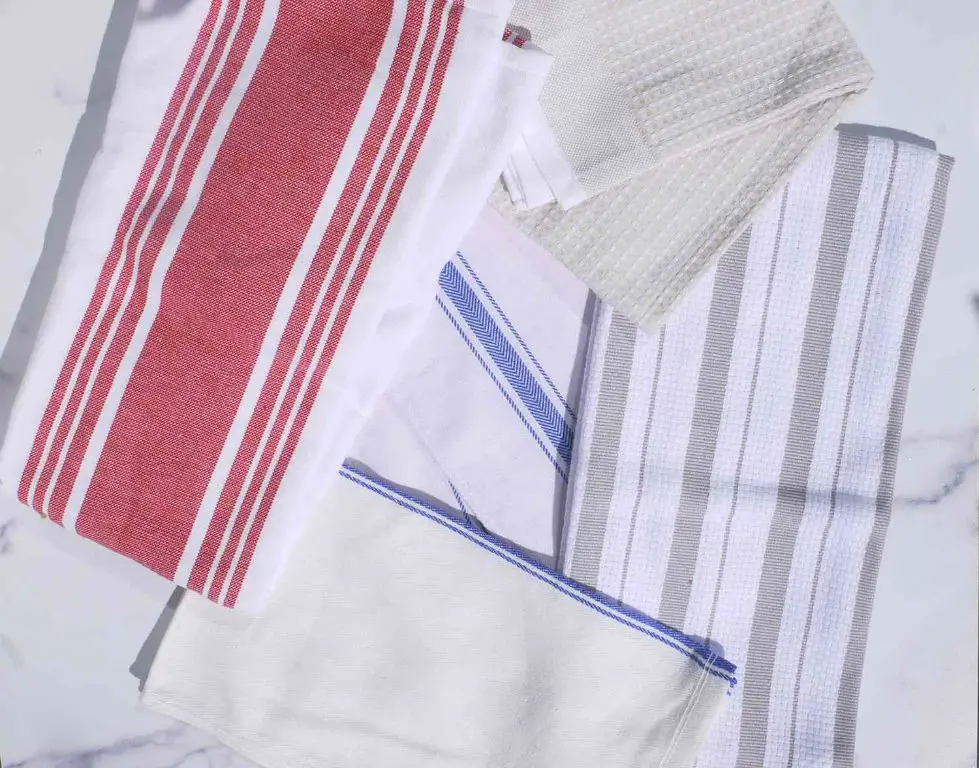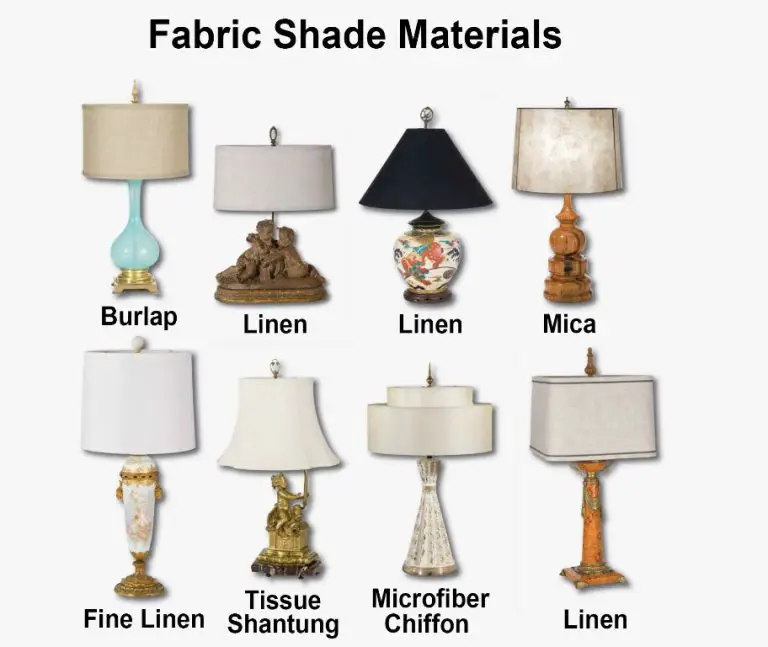What Is The Best Fabric For Kitchen Hand Towel?
Kitchen towels are an essential part of any well-equipped kitchen. They are used regularly for drying dishes, wiping counters, handling hot pans, and countless other tasks. With frequent use, it’s important to choose a fabric for kitchen towels that is both absorbent and durable. The most common fabric options for kitchen towels are cotton, linen, microfiber, bamboo, and hemp. Each has their own advantages and characteristics that make them suitable for the kitchen. Choosing the right fabric comes down to factors like absorbency, durability, sustainability, and personal preference. This article will provide an overview of popular fabric choices for kitchen towels and discuss the benefits of each to help determine the best option for your needs. The information provided will help equip your kitchen with towels made of the optimal fabric.
Cotton
Cotton is one of the most popular fabrics used for kitchen towels. It offers many beneficial properties that make it a top choice:
Absorbency – Cotton is very absorbent, able to soak up lots of water and moisture quickly. The fibers swell as they absorb, helping the towel dry your hands and dishes efficiently.
Durability – Well-made 100% cotton towels are very durable, resisting tearing and fraying even after repeated use and washes. The dense weave stands up well to daily wear and tear in the kitchen.
Breathability – Cotton breathes very well, allowing air flow through the fabric. This helps your hands stay comfortable when using a cotton kitchen towel.
Affordability – Simple cotton kitchen towels are very affordable, especially compared to other fabric options. The availability and low cost of cotton makes it an economical choice.
With its excellent absorbency, durability, breathability and affordability, cotton is a wonderful choice for kitchen hand towels and offers great value and performance.
Linen
Linen is one of the most popular fabrics for kitchen towels due to its exceptional absorbency, durability, breathability, and attractive look. Made from the fibers of the flax plant, linen is highly absorbent, absorbing up to 20% of its weight in moisture while feeling dry to the touch (Rough Linen). This makes it excellent for drying hands, dishes, and surfaces. The natural fibers also have antibacterial properties that resist odors.
In addition to absorbency, linen is known for its incredible strength and durability. With proper care, a linen kitchen towel can last for many years of frequent use and washing. The fibers do not pill or fray easily. Linen also becomes softer over time as the fibers relax. This breathable fabric allows air to flow through it, drying quickly after getting wet. It’s ideal for hot, humid kitchen conditions.
The subtle texture and lightweight drape of linen gives it an elegant look and feel. Linen kitchen towels come in beautiful natural shades and add a touch of simple sophistication to any kitchen. Available in various weaves like herringbone and huckaback, linen offers visual interest.
Microfiber
Microfiber kitchen towels are made from very fine synthetic fibers that are tightly woven together to create a soft, durable towel. Microfiber is an excellent choice for kitchen towels because of its superior absorbency. The fine fibers act like little sponges that soak up water and moisture quickly and efficiently. According to testing done by Consumer Reports, microfiber towels can absorb up to 7 times their weight in liquid, while cotton towels absorb about 3-4 times their weight.
In addition to great absorbency, microfiber kitchen towels are also highly durable. The tight weave makes them resistant to abrasion and daily wear and tear. Microfiber towels can last for several years with proper care. They are also lint-free, so they won’t leave little fibers behind on surfaces. This makes them ideal for drying dishes, counters, and appliances without creating a mess. And because microfiber dries so quickly, bacteria have less opportunity to grow, making these towels naturally more hygienic.
The quick-drying feature also makes microfiber very convenient to use. You can wash and reuse these towels multiple times per day as needed. Some popular microfiber kitchen towel brands are Zephora, Lithuanian Linen, and Sage. For the ultimate in absorbency and durability, microfiber is an excellent fabric choice for kitchen towels.
Bamboo
Bamboo is an increasingly popular option for kitchen hand towels due to its softness, absorbency, and sustainability. Bamboo is a grass that is very fast growing, allowing new bamboo to be harvested every 3-5 years without replanting, making it a renewable resource. Bamboo fabric is naturally smooth and soft, yet durable. Studies show bamboo can absorb up to 60% more liquid than a traditional cotton towel while drying significantly faster. This makes bamboo an excellent choice for a kitchen towel that can soak up spills quickly. Bamboo also has natural antibacterial properties, allowing it to stay fresher longer. When shopping for bamboo towels, look for brands that use organic bamboo materials and non-toxic dyes and bleaches. Bamboo is still often processed using harsh chemicals, so eco-friendly production methods are ideal. Sustainably produced bamboo is biodegradable and compostable at the end of its lifespan. Overall, bamboo makes an absorbent, soft, and sustainable choice for eco-conscious consumers seeking highly functional kitchen hand towels.
Hemp
Hemp is an extremely absorbent and durable fabric that makes excellent kitchen towels. According to Hemptique, hemp kitchen towels and accessories offer “sustainable, durable, premium-quality” options for the kitchen. Hemp is more absorbent than cotton, with hemp fabrics gaining softness over time and reaching “maximum absorbency and softness” after 3-4 washes, as noted by Bohempia.
In addition to exceptional absorbency, hemp is also praised for its durability. The fibers are strong and resistant to wear and tear. Hemp kitchen towels can withstand daily use and frequent washings while maintaining their integrity. Compared to other fabrics like cotton that weaken over time, hemp only gets softer and more absorbent.
Sustainability is another major advantage of hemp. It’s a fast-growing crop that requires few pesticides and leaves the soil in good condition. Hemp fabric production also uses less water compared to cotton. With excellent absorbency and durability from a renewable, eco-friendly crop, hemp makes a great choice for absorbent, long-lasting, and sustainable kitchen towels.
Comparing Fabrics
When selecting a fabric for kitchen towels, there are a few key factors to consider:

Absorbency
Absorbency is crucial for kitchen towels that will be used for drying dishes, hands, and spills. Tests show that cotton and linen excel in absorbency compared to microfiber or bamboo. The natural fibers in cotton and linen soak up water effectively.
Durability
You want kitchen towels that will withstand frequent washing without falling apart. Cotton holds up well to repeated machine washing, while linen can become brittle over time. Microfiber is quite durable but may lint.
Cost
Cotton kitchen towels are generally the most affordable option. Linen costs more. Microfiber and bamboo towels fall somewhere in between cotton and linen for price.
Softness
For hand drying, softness is desirable. Cotton has a soft, plush feel when woven into terry cloth. Linen is smooth but not as soft as cotton terry. Microfiber has a suede-like feel.
Based on the key factors, cotton terry cloth towels offer the best combination of absorbency, durability, affordability, and softness for most kitchens.
Best Uses
When selecting a hand towel for the kitchen, consider how you plan to use it. Different fabrics have advantages and disadvantages for various kitchen tasks:
Cotton is very absorbent and versatile. It’s excellent for drying hands, dishes, and countertops. The texture also helps scrub off dried-on messes.
Linen is highly absorbent but less durable when scrubbing. It works well for drying hands and dishes, but may not stand up to tough messes.
Microfiber is extremely absorbent and quick-drying. It excels at drying hands and dishes without leaving lint behind. However, it’s less durable for scrubbing.
Bamboo is very soft and absorbent. It’s a good choice for drying hands gently. It’s less suitable for scrubbing dishes or counters.
Hemp is abrasive and textured. It works well for scrubbing and drying hands or dishes. The coarseness also helps remove dried-on food.
Consider your main kitchen uses – drying hands, delicate dishware, tough scrubbing, etc. Then select the fabric that’s best suited for your needs.
Care
Properly caring for kitchen hand towels is essential to extending their lifespan. Different fabrics require different care techniques. Here are some tips for caring for common kitchen hand towel fabrics:
Cotton
Cotton towels can be machine washed and dried, but may shrink slightly when exposed to high heat. Wash in warm or cold water using a gentle detergent. Avoid using bleach as it can weaken cotton fibers over time. Tumble dry on low and remove promptly to prevent wrinkling. Iron while still slightly damp if needed.
Linen
Linen towels should be washed in cold water on a gentle cycle. Avoid using bleach or fabric softener which can damage linen fibers. Either line dry or tumble dry on low, as high heat can wrinkle linen. For stiff, crunchy linen, tumble dry briefly then wrap in a towel and press with an iron.
Microfiber
Machine wash microfiber towels in cold water on a gentle cycle. Do not use fabric softener or bleach. Tumble dry on low and avoid over-drying. Do not iron microfiber as it can damage the fibers.
Bamboo
Bamboo towels can be machine washed in cold water on a delicate cycle. Use a mild, bleach-free detergent. Do not use fabric softeners or dryer sheets. Line drying is best. If machine drying, use the lowest heat setting. Do not iron bamboo towels.
Hemp
Hemp towels should be machine washed in cold water with a gentle, eco-friendly detergent. Do not use bleach. Line drying is ideal, but tumble drying on low heat is also fine. Avoid fabric softeners and ironing which can damage hemp fibers.
Recommendation
The best overall fabric for kitchen hand towels is cotton. Cotton absorbs moisture well, is affordable, soft yet durable, and easy to clean and care for. Here’s a summary of the key pros and cons of cotton:
Pros:
- Absorbent – Cotton absorbs moisture and dries quickly.
- Soft – It has a soft, plush feel.
- Durable – Cotton is strong, withstands frequent washing, and has a long lifespan.
- Breathable – It allows air flow to hands while drying.
- Affordable – Cotton towels are budget friendly.
- Easy to clean – Cotton can be laundered with bleach to sanitize.
Cons:
- Prone to stains – Cotton can discolor and stain over time.
- May shrink – Cotton towels may shrink slightly after washing.
- Less absorbent when wet – Absorbency decreases when saturated.
In summary, 100% cotton is recommended as the best all-around fabric for kitchen hand towels due to its softness, ability to thoroughly absorb moisture, durability, affordability, and easy care. Blends with a high cotton content also perform well. While no fabric is perfect, cotton offers the optimal balance of absorbency, comfort, longevity, and value for kitchen hand towels.




